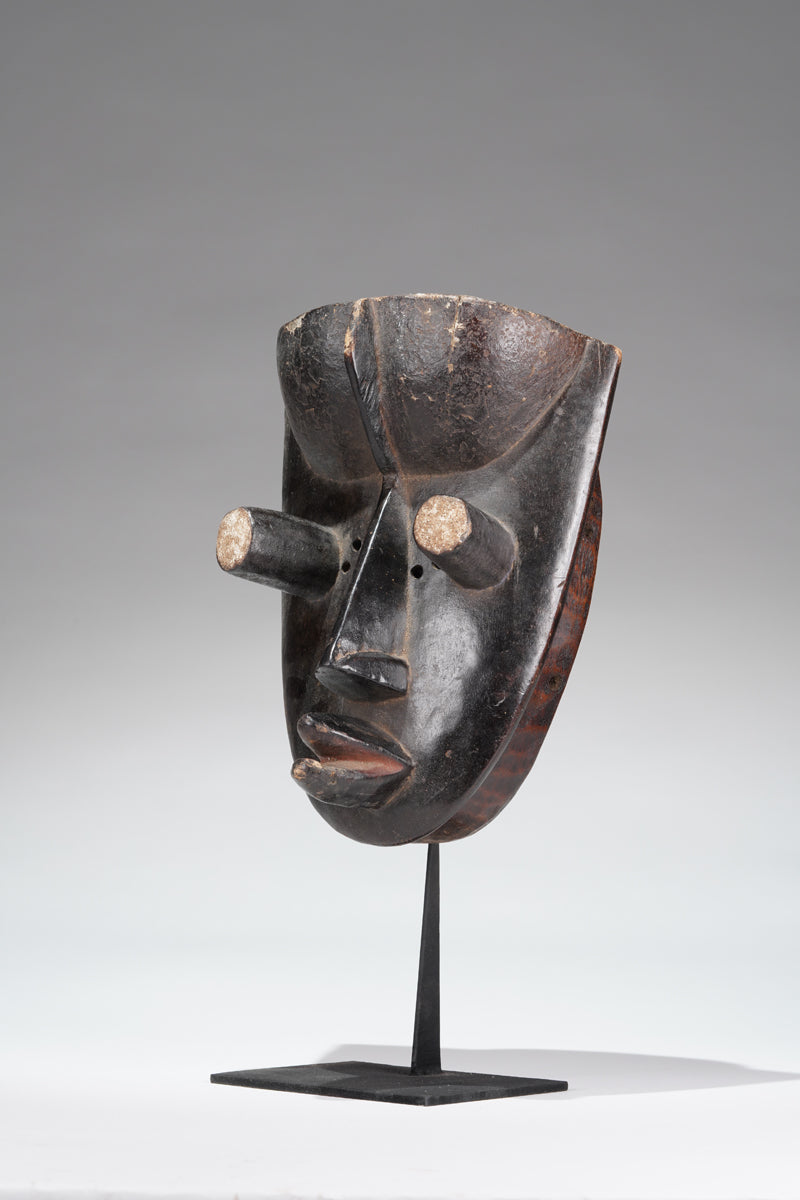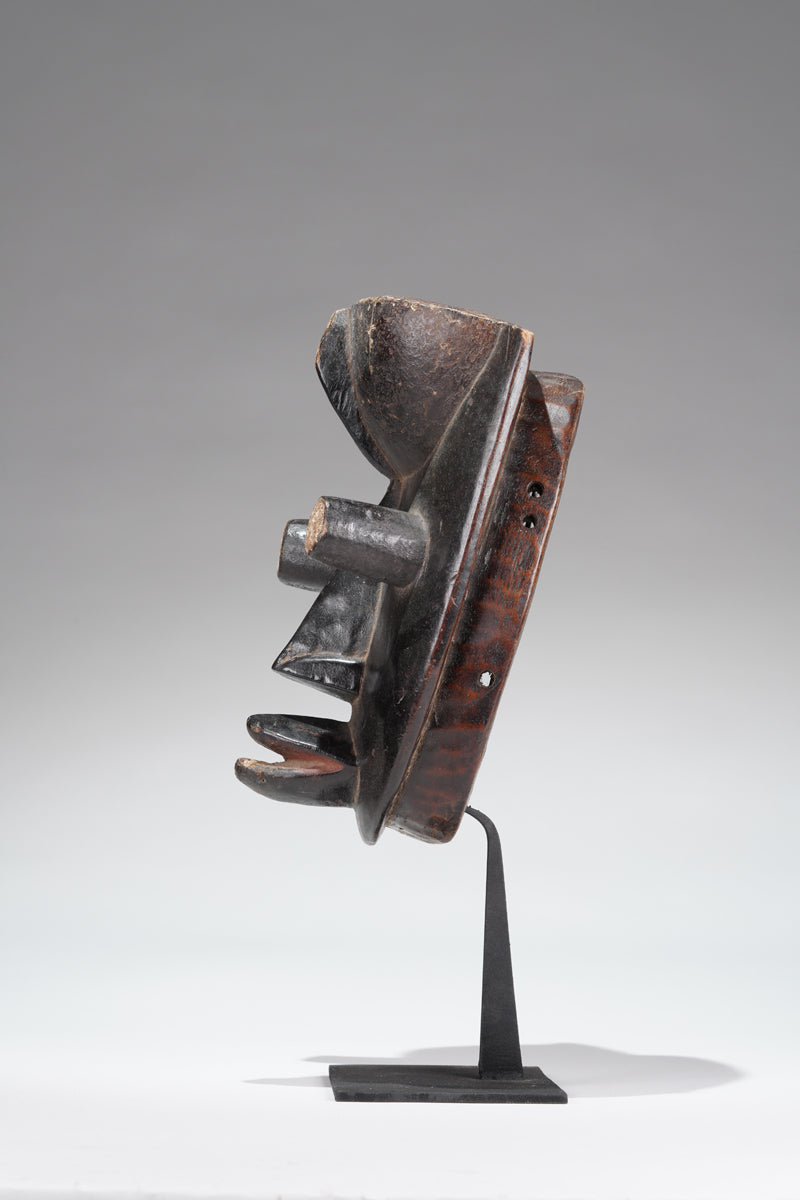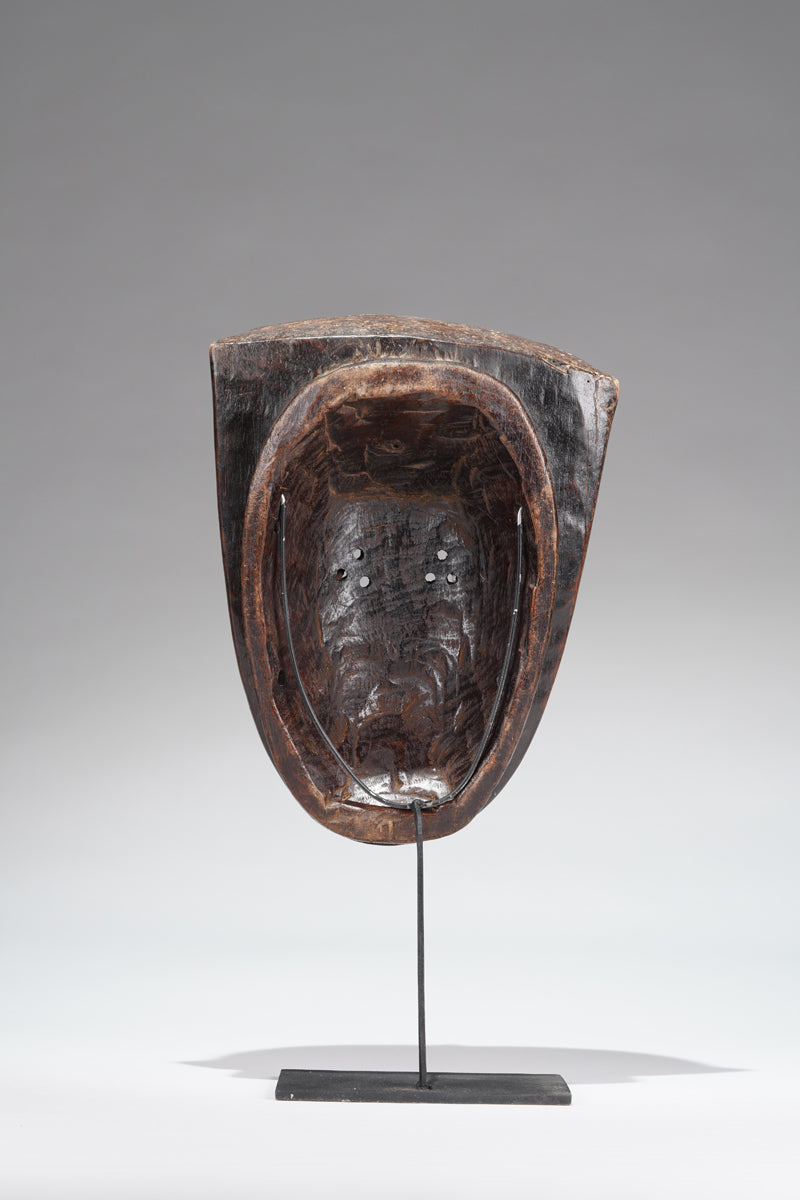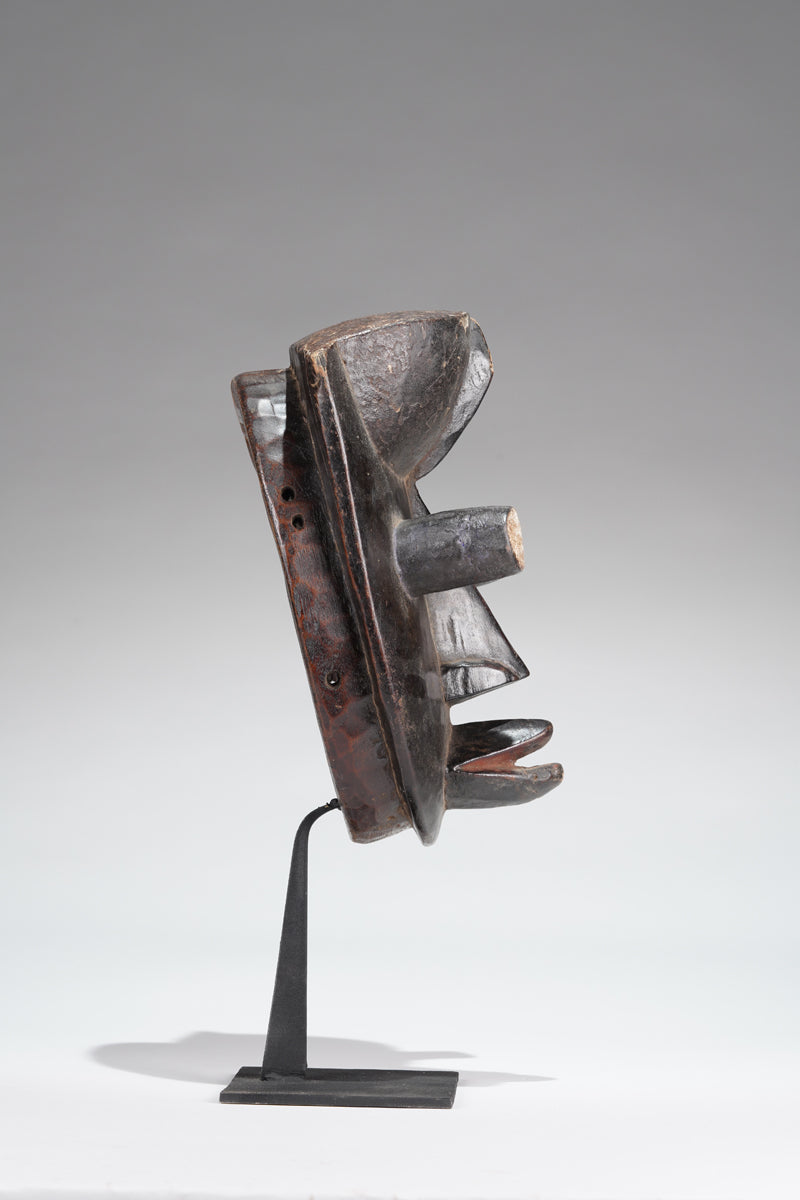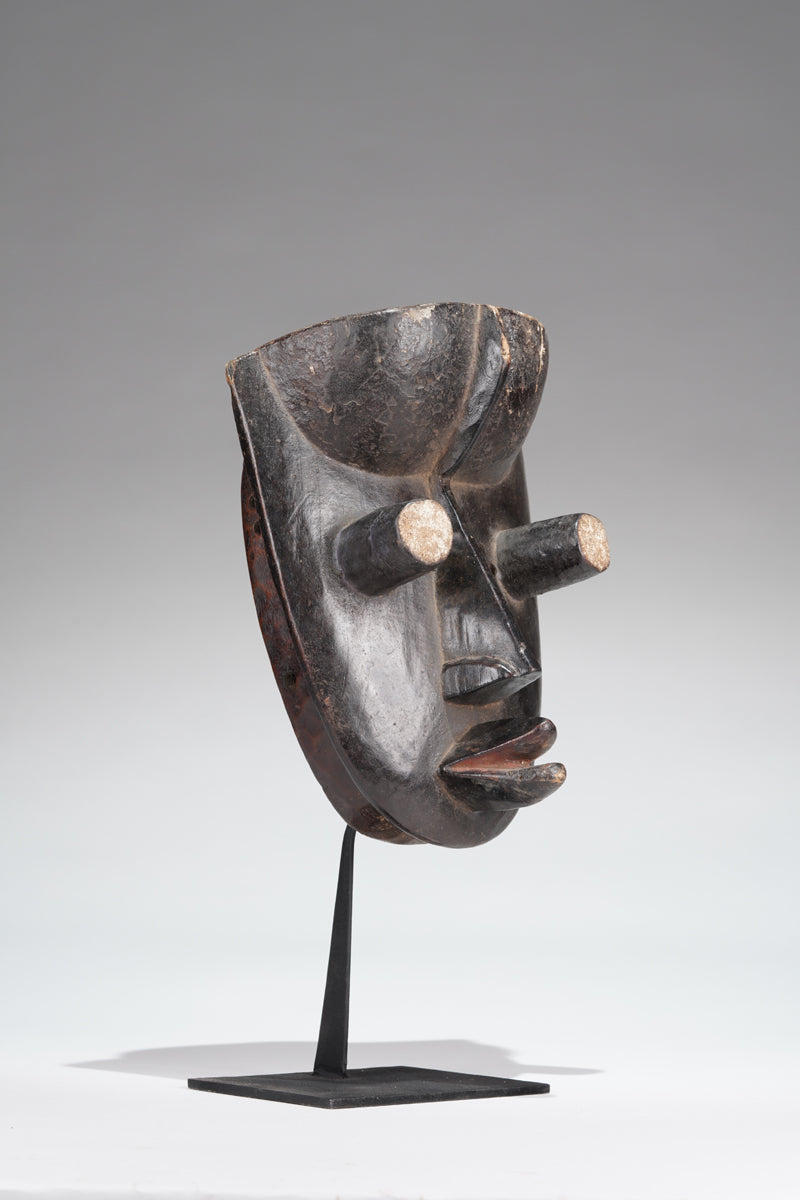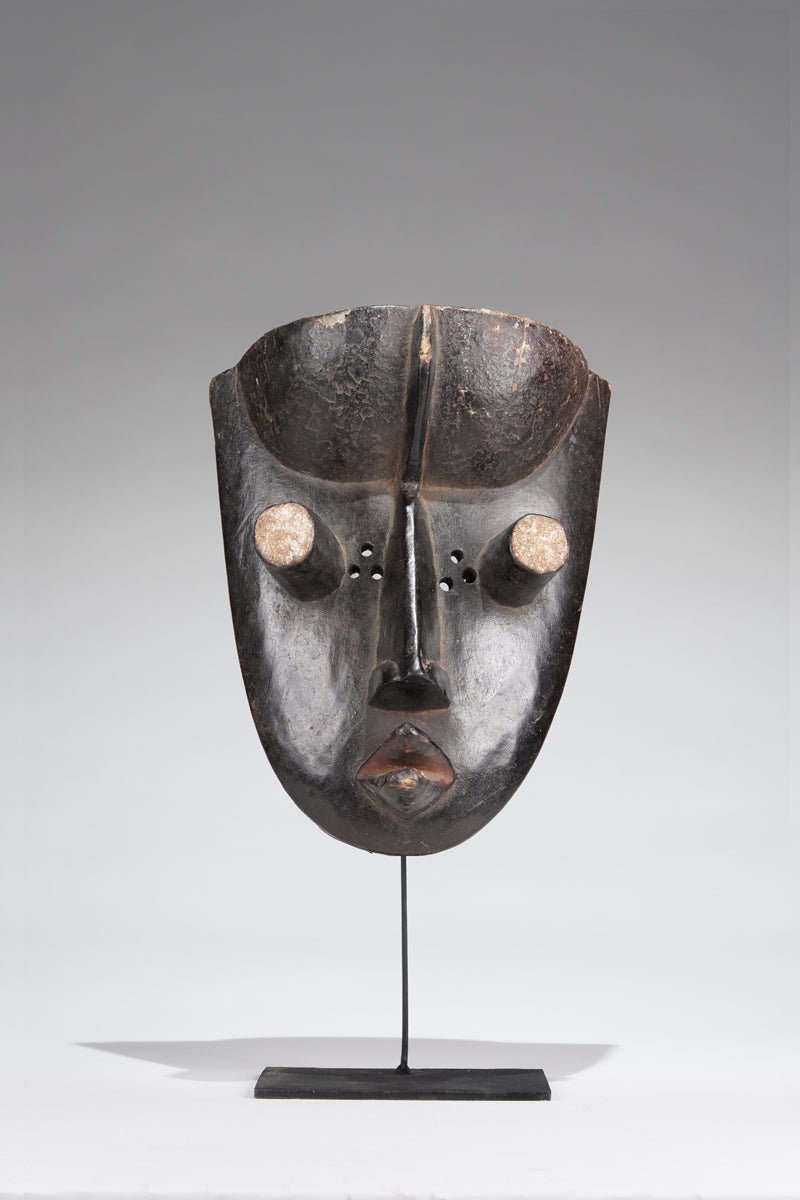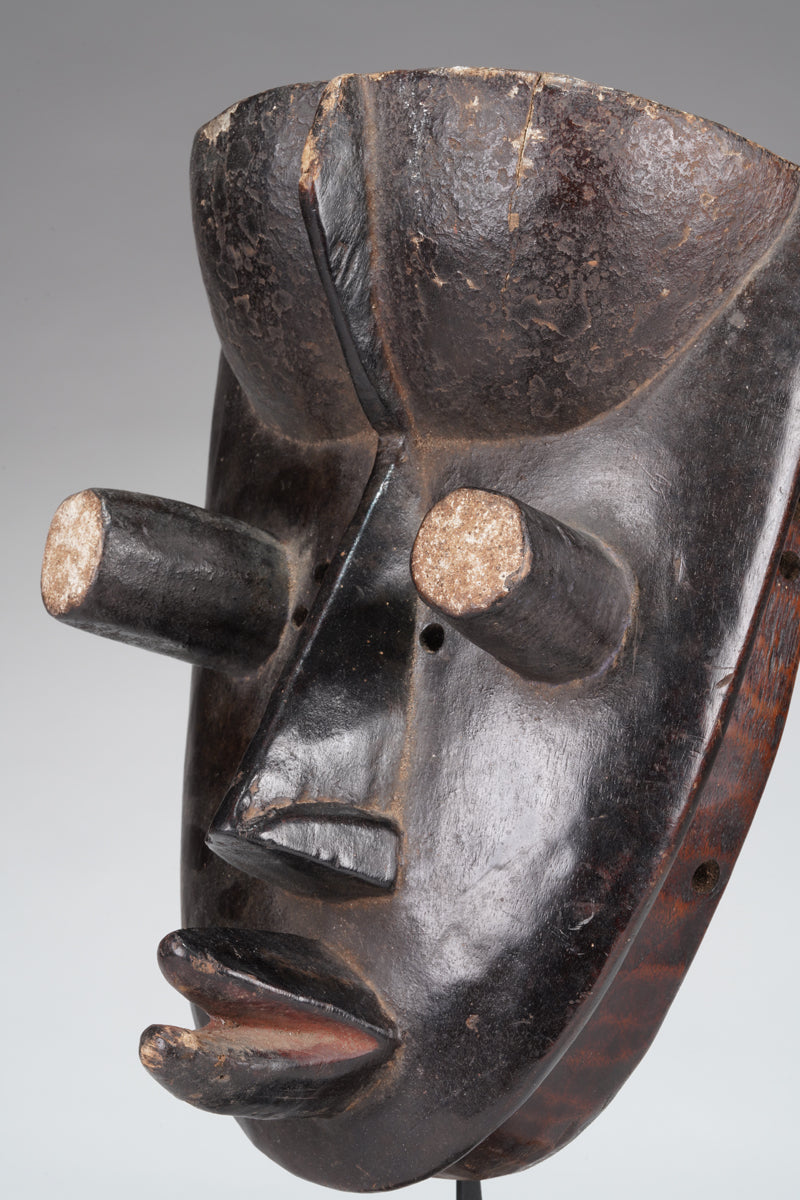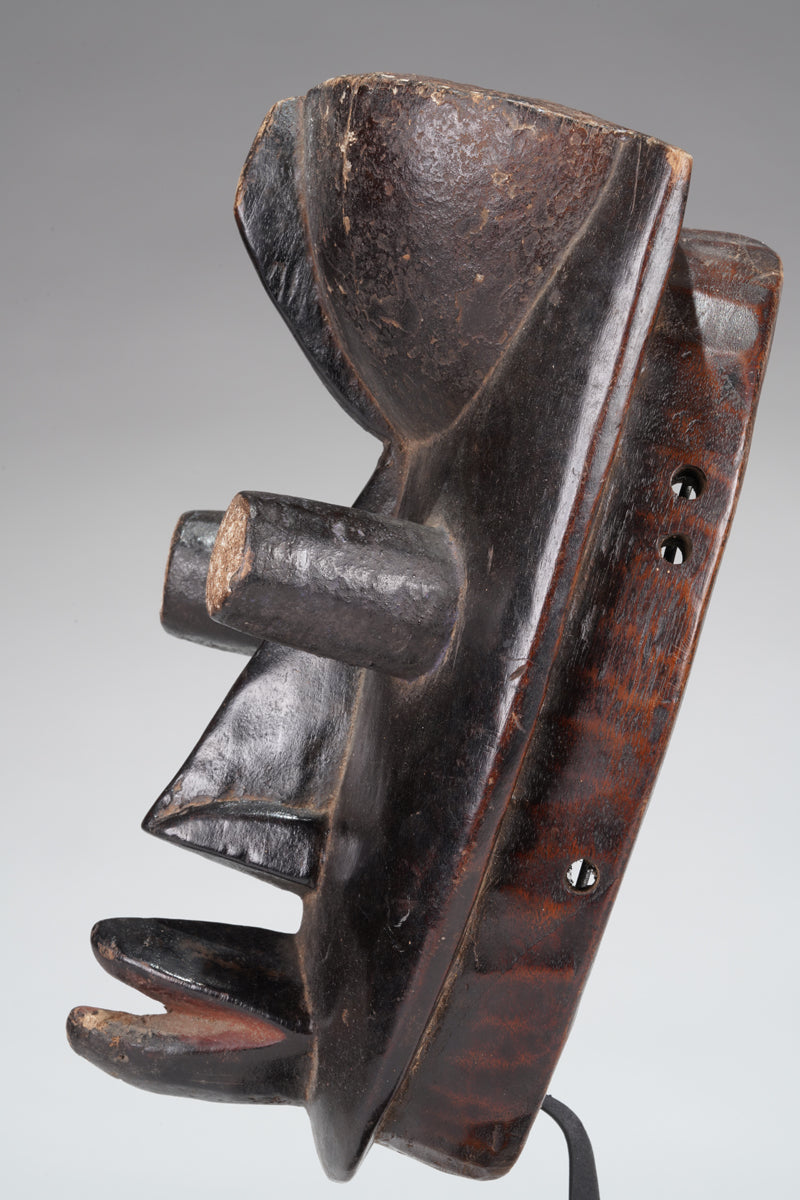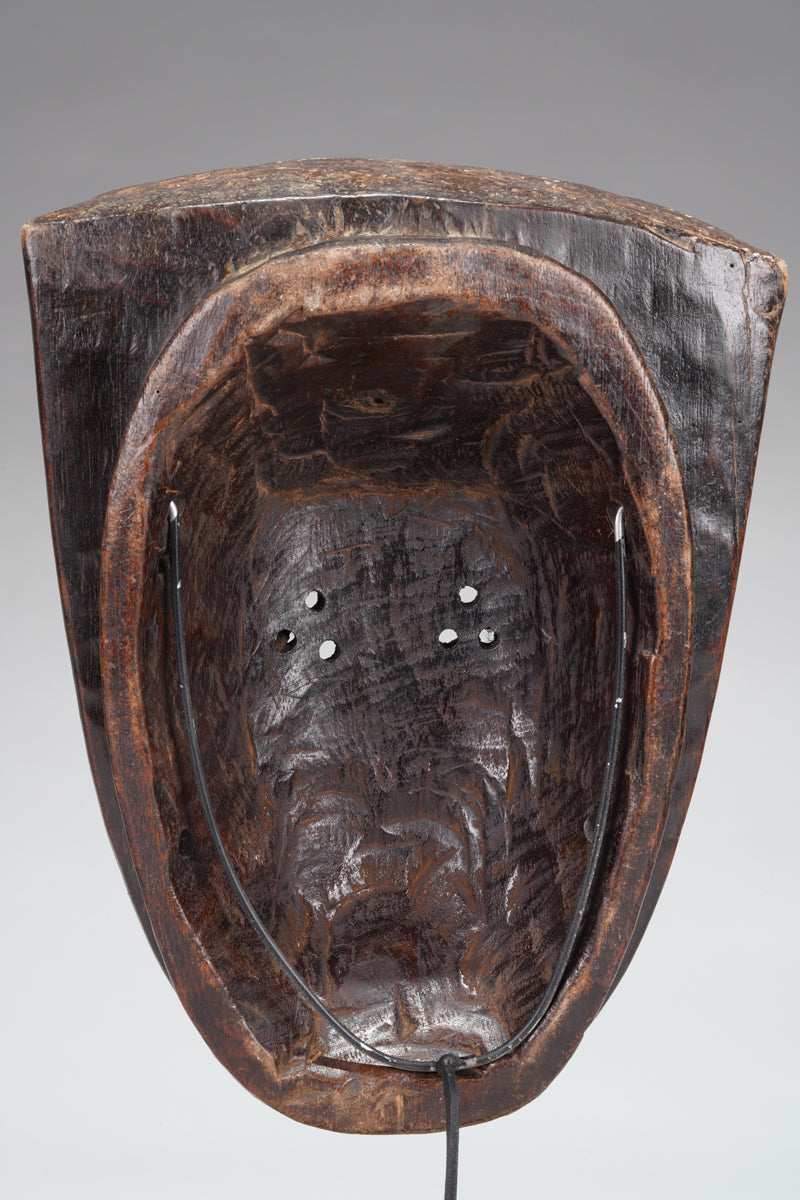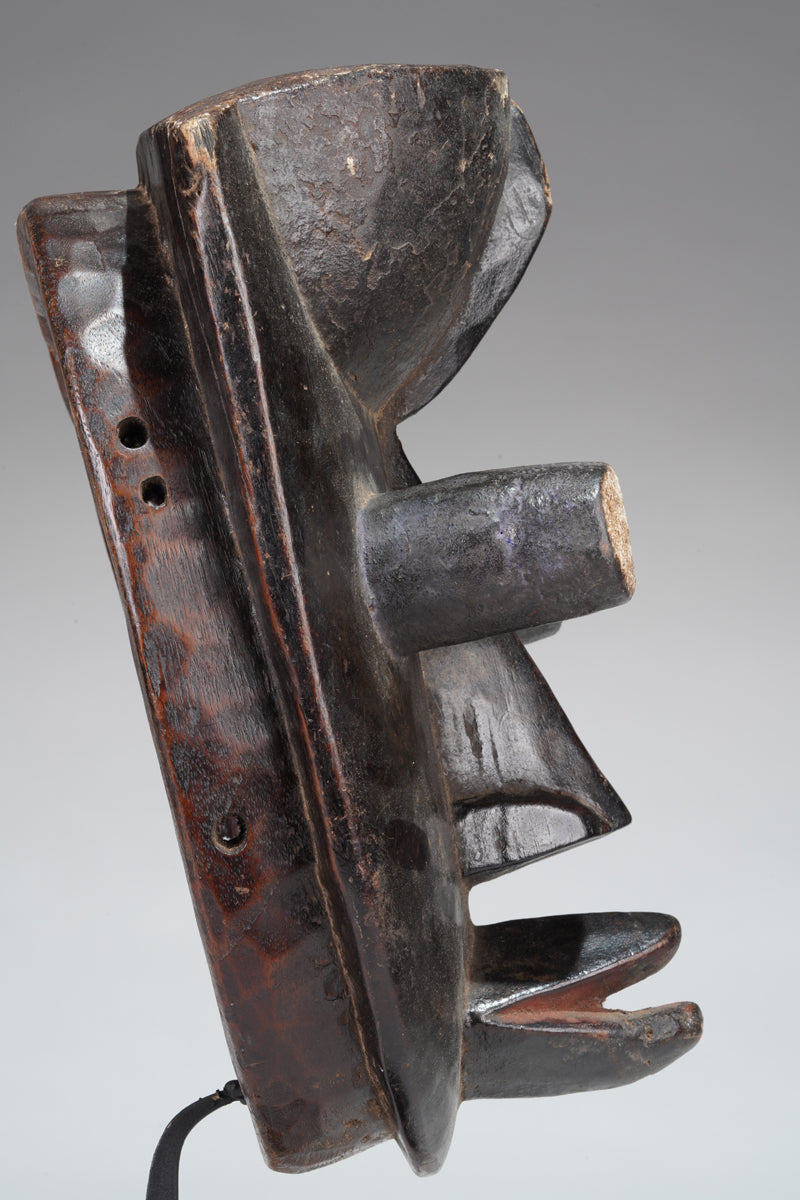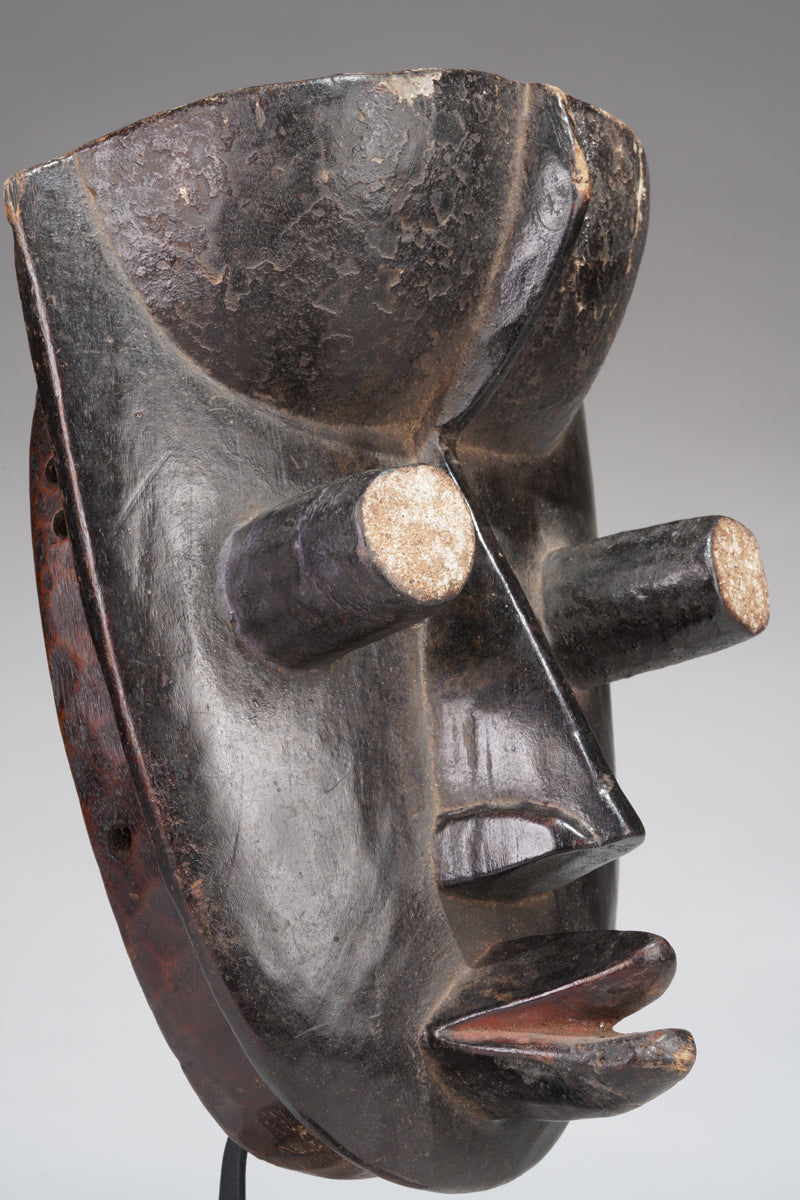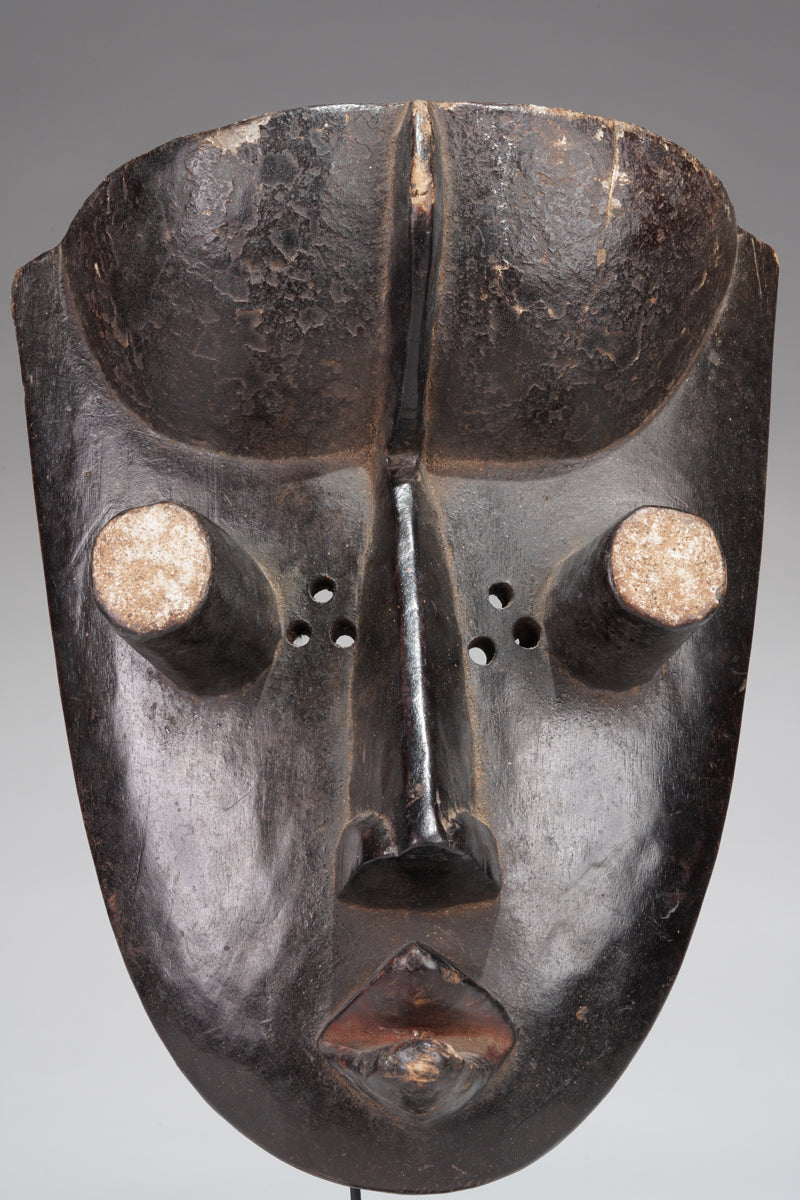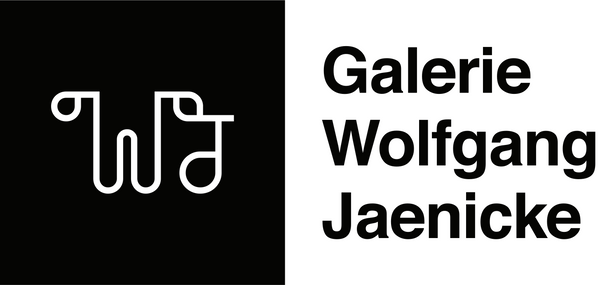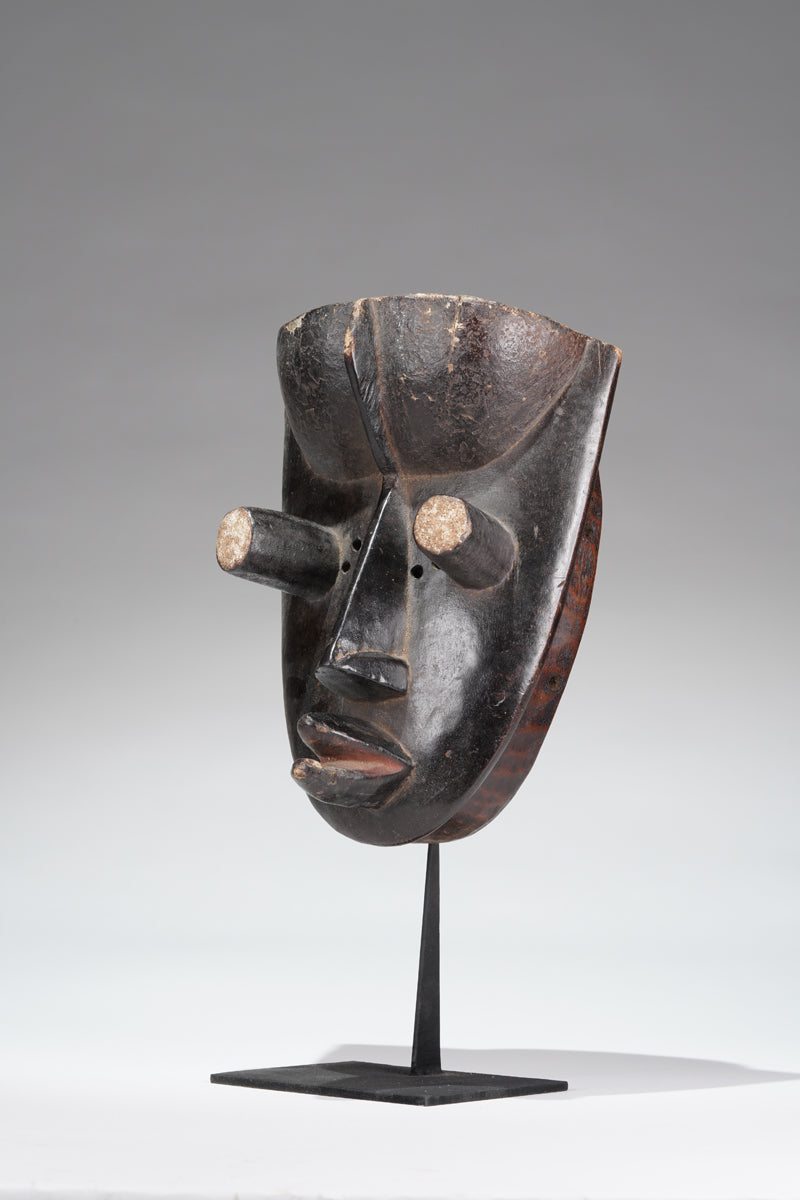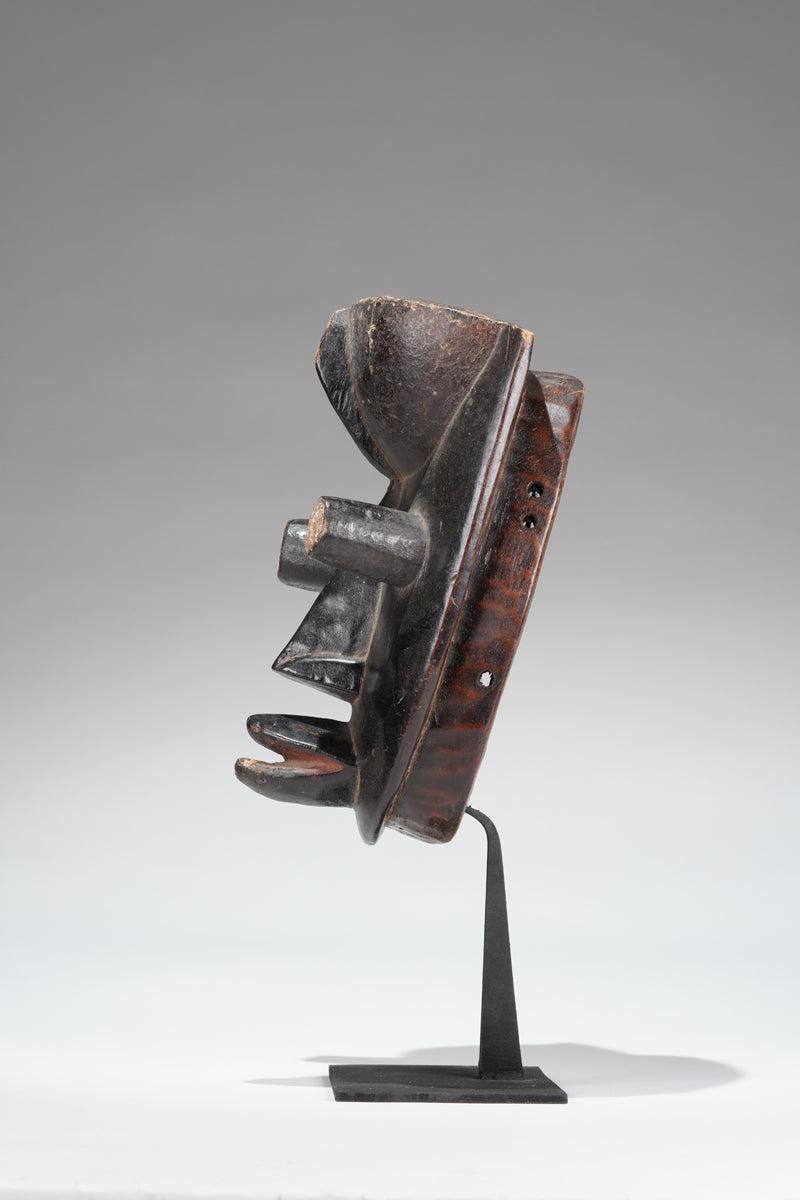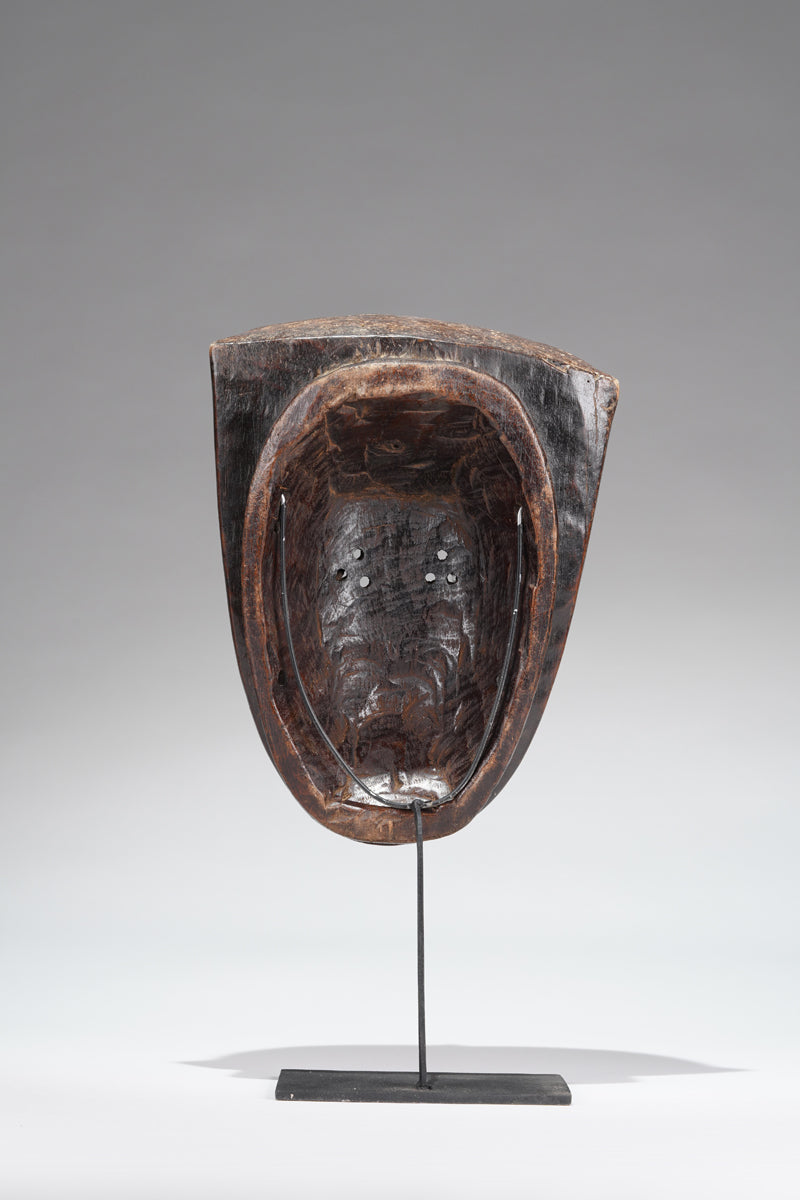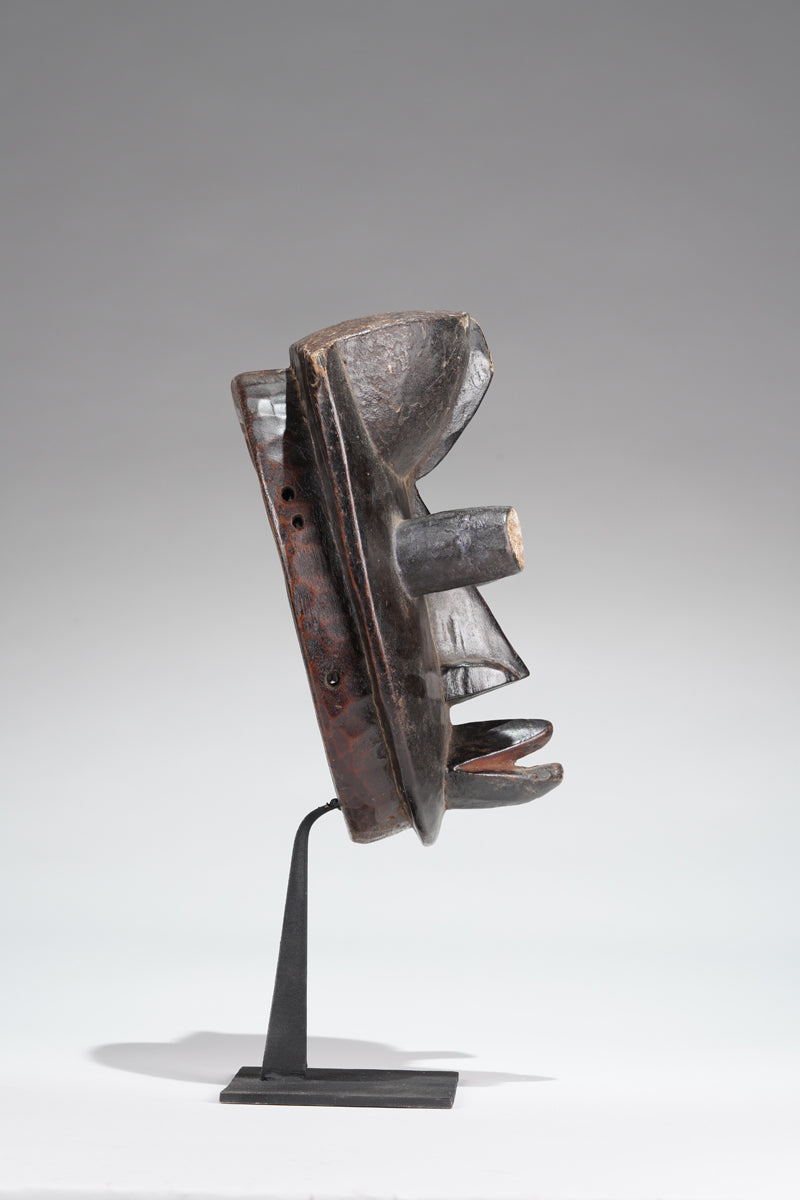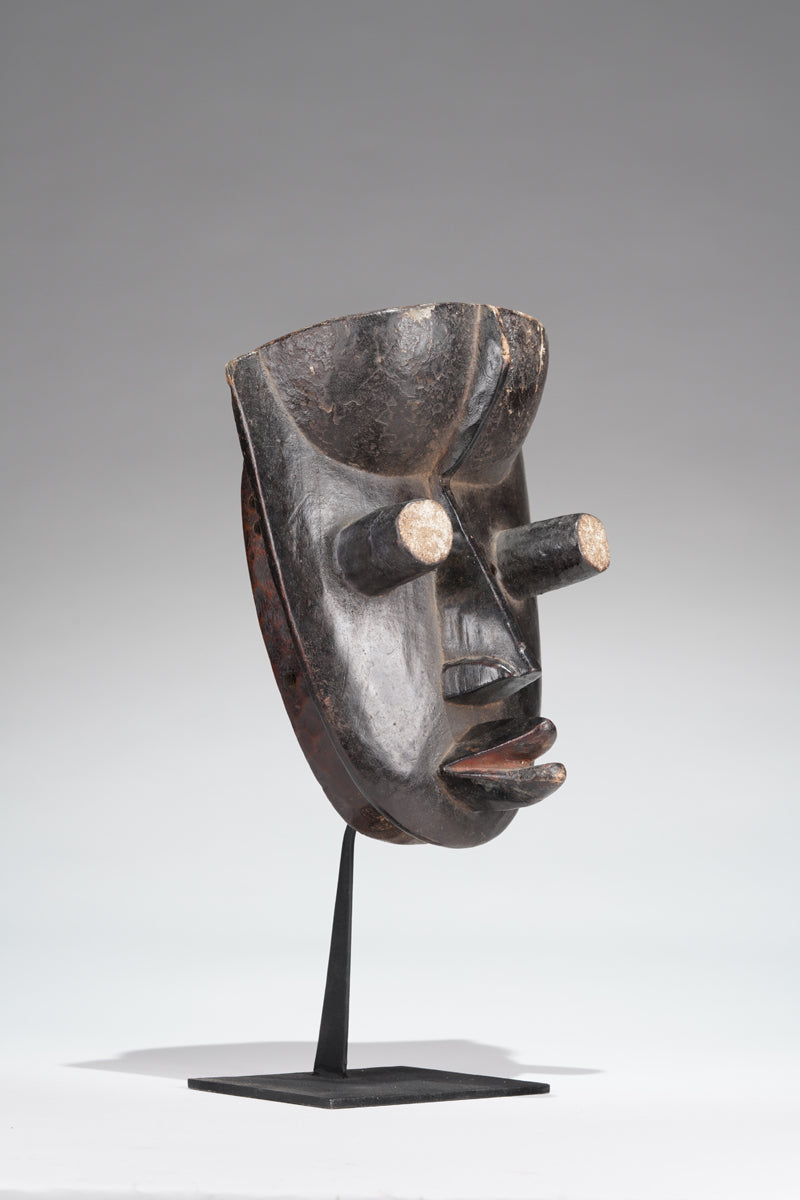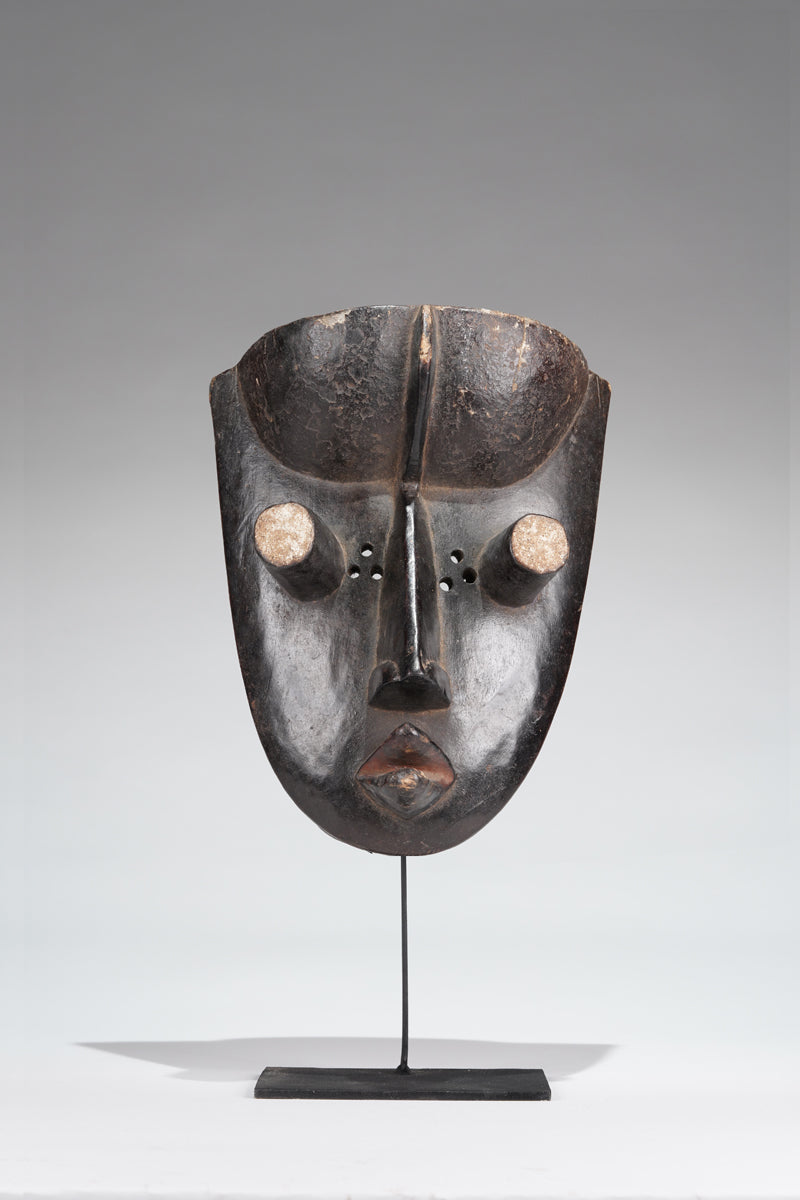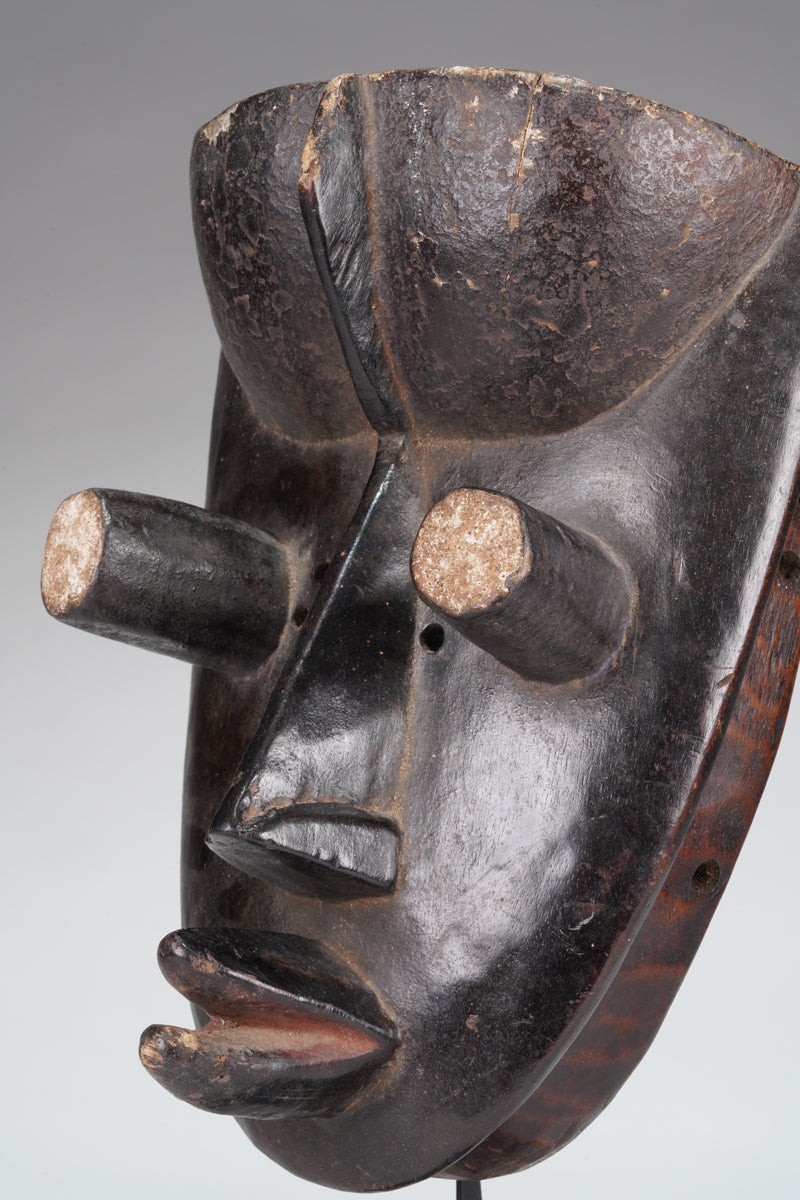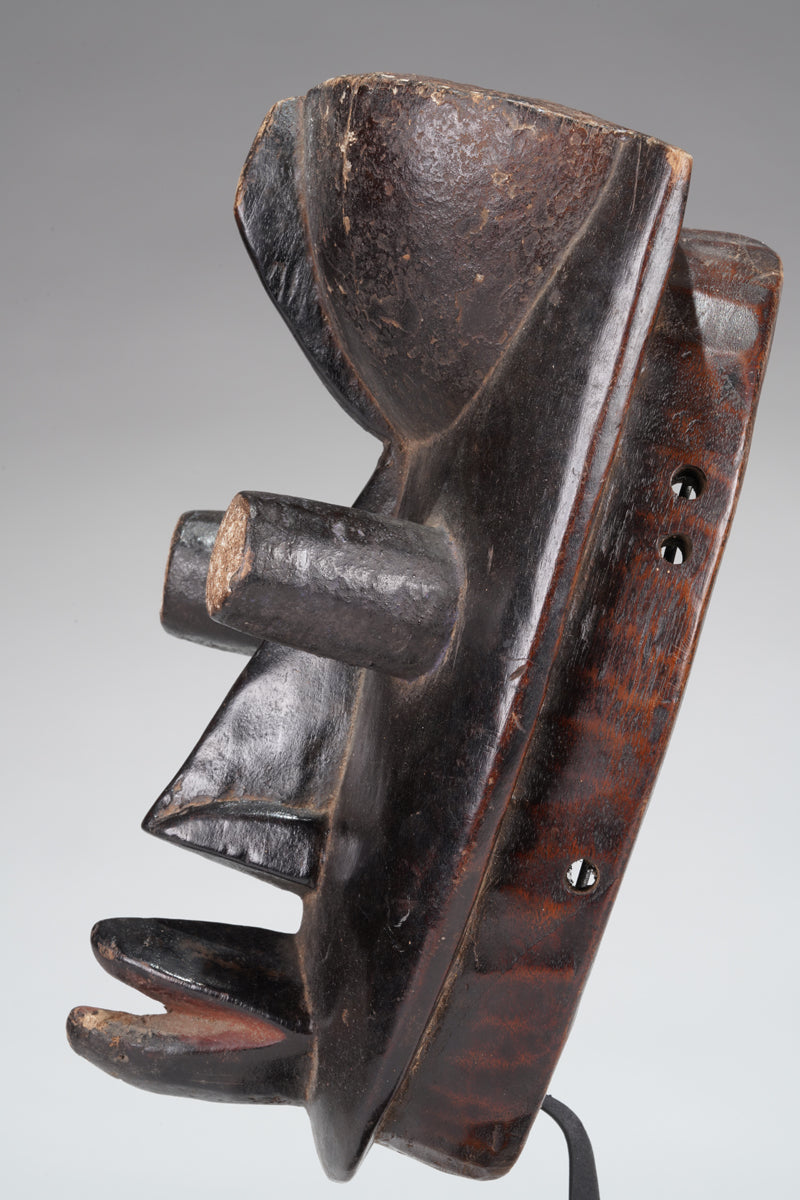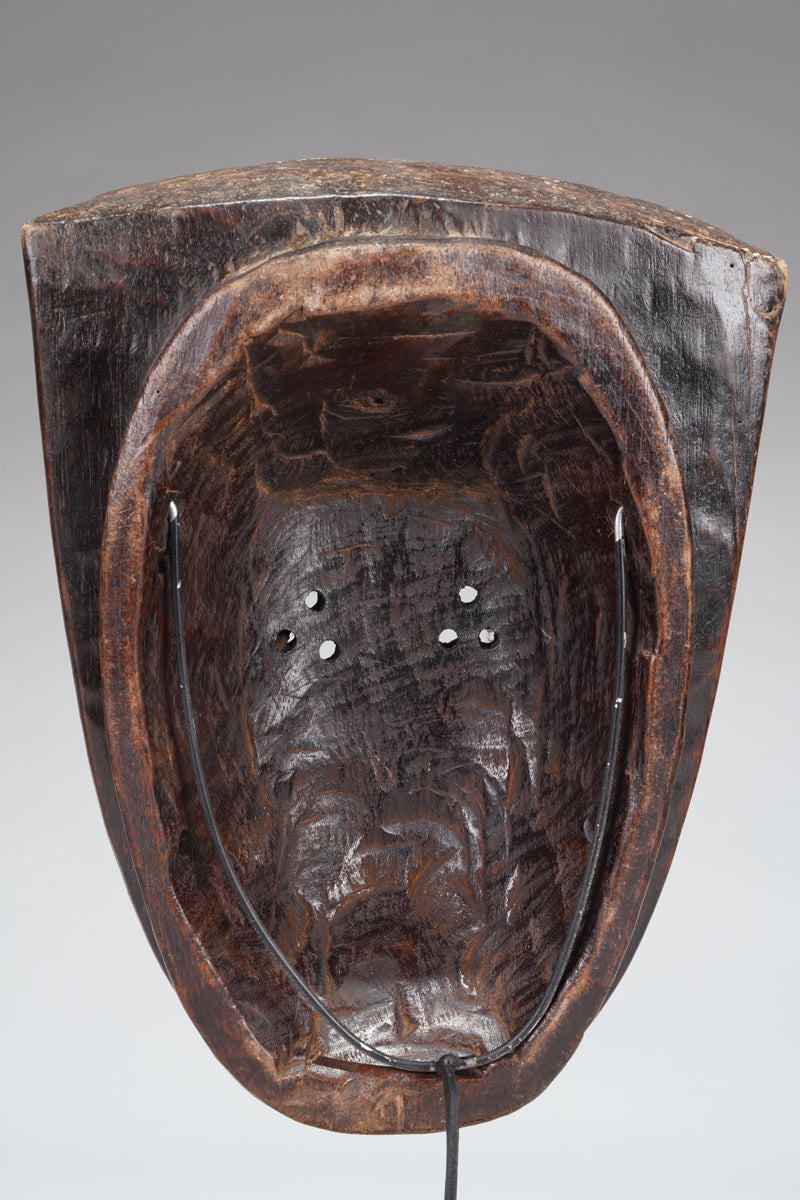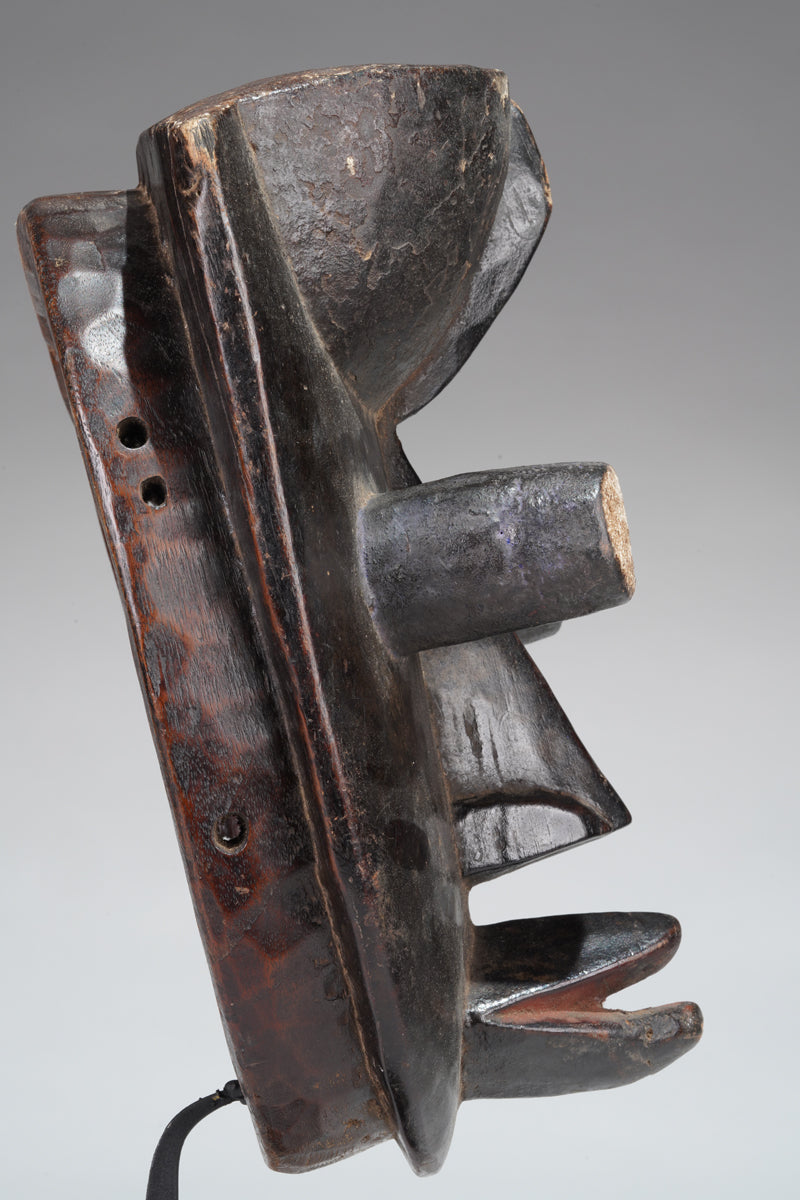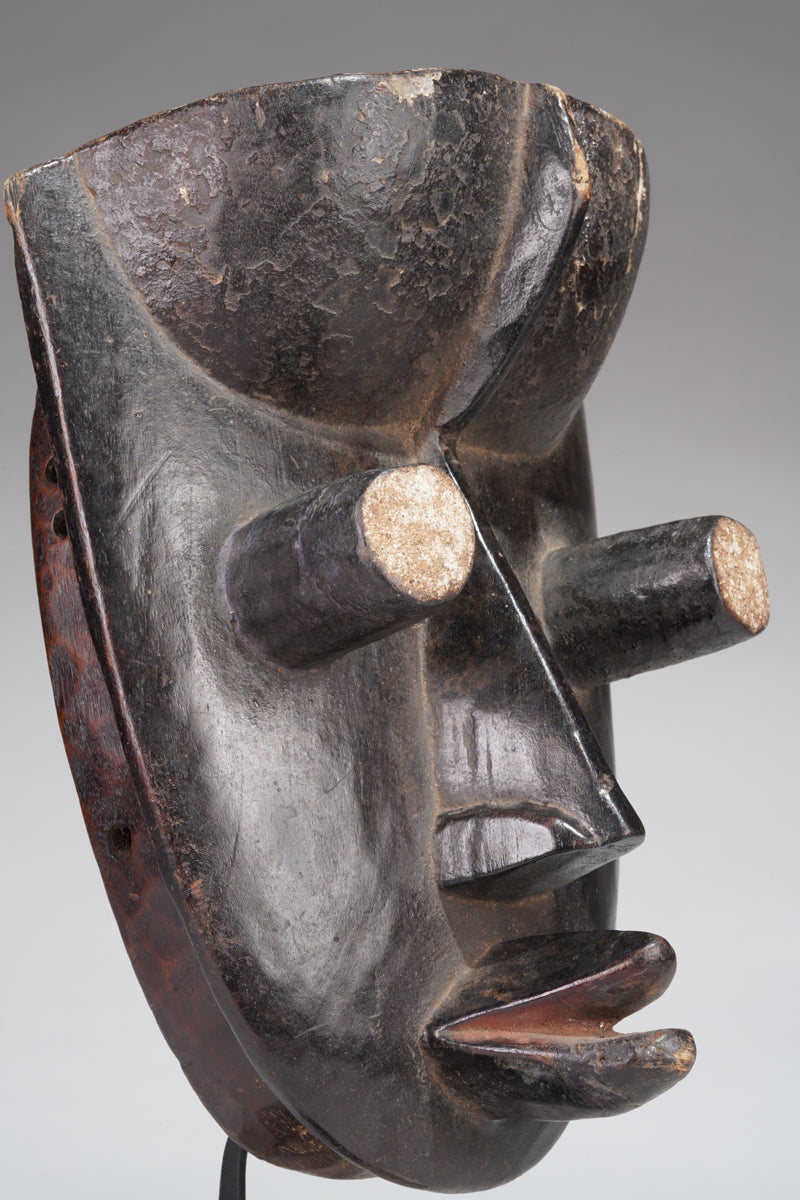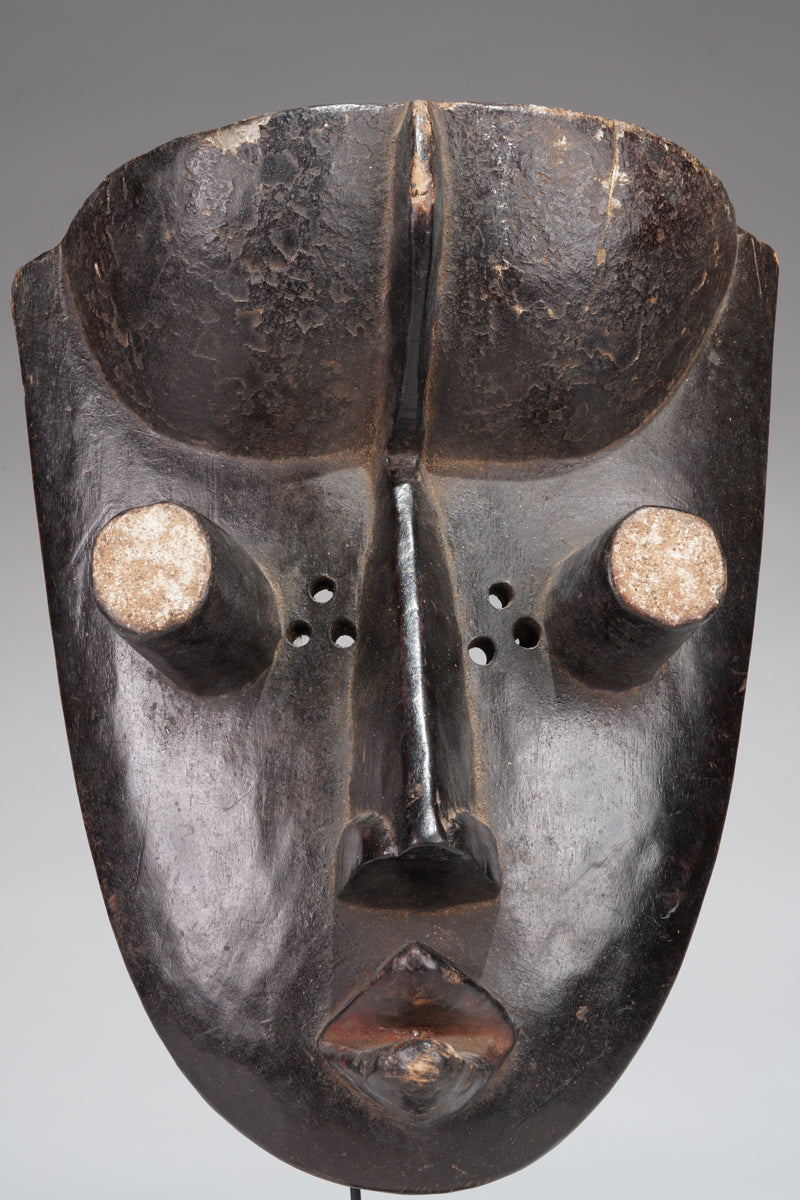wolfgang-jaenicke
A Grebo mask, Liberia
A Grebo mask, Liberia
Couldn't load pickup availability
A Grebo mask, Liberia, of oval shape, protruding pointed mouth, long nose, two tubular eyes poking out, a bulging forehead split in-between with an elevated line, the discs of the eyes are painted white, the inside of the mouth red, the whole mask is glossy and the dark wood shines; glossy by use, encrusted patina on the forehead.
The masks that are created represent the spirits of the hidden world that dwells within the forests. Skilled initiates are responsible for their production, and they are used during special ceremonies for initiates and public festivals. This particular mask belongs to the category of plank masks with tubular eyes, which tend to have a more abstract appearance. The interest of cubist painters and modern sculptors in the abstract of the Grebo mask can be seen in some of their works, such as Picasso´s 1914 guitar.
Lit.: Christopher D. Roy/Thomas G.B. Wheelock: Land of the Flying Masks. Art and Culture in Burkina Faso
“The Grebo use several types of masks, some used for adult initiation or religious ceremonies. The most commonly seen is the war mask, used by warrior societies and formed in the shape of a plank with cylindrical eyes, numbering between two and twelve. The mask is danced in preparation for war and at the funerals of warriors.”
Lit: Second Face, Museum of Cultural masks
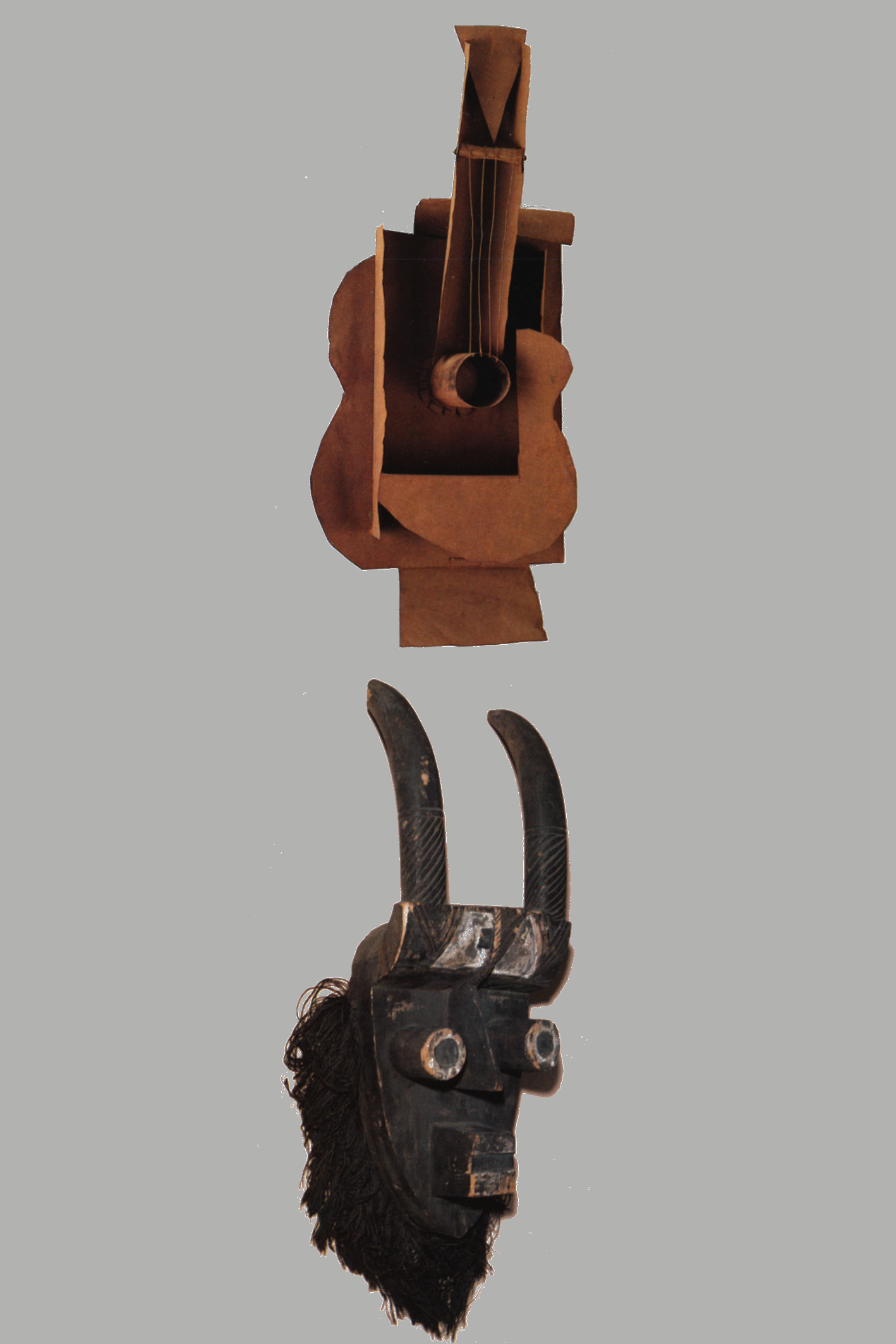
The Picasso Grebo Mask of 1912 and the sculpture "Guitar", created in
the same year.
"The Grebo people inhabit the coast of Eastern Liberia and surrounding forests, and are a small ethnic group named after their migration from the Sahara region to Liberia, translating to "leaping monkey people." Known for their ferocity in battle, the construction of their mask work reflects their warrior culture, with flat war masks featuring 3D tubular eyes measuring up to a meter in height. These masks make appearances not only during battles but also at pre-dance rituals and funerals of fallen warriors.
Aside from war masks, the Grebo also create tall, flat masks with large faces and painted "buffalo horns," as well as masks that represent the ideal female, characterized by slitted eyes and a gentle expression. Both of these mask types are used during initiation rites and festive events.
Grebo masks have notably influenced the works of Pablo Picasso, who, alongside Georges Braque, created Cubism, a style that portrays subjects in 2D while combining multiple perspectives into one image. Picasso purchased a Grebo mask in the early 1900s, which inspired him as he developed Cubism, culminating in one of his most well-known works, Les Demoiselles d'Avignon, featuring five nude women with angular bodies and faces inspired by the Grebo mask."
Lit: The Metropolitan Museum of Art
Height: 28 cm
Weight: 2 kg incl. stand
